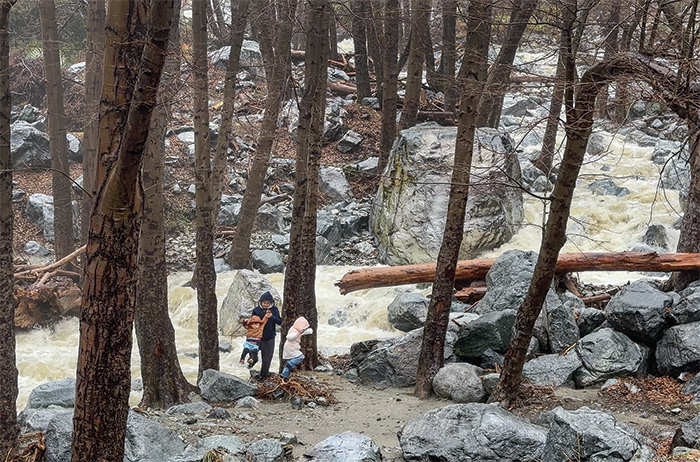Claremont trees pay price from new unwanted pest

There’s a new bug in town, and it’s threatening the city’s Heritage Trees.
The Polyphagous Shot-Hole Borer, or Shot-Hole Borer for short, is a new insect that has been infecting mostly Sycamore and Coastal Live Oak trees throughout Claremont.
“It has the potential to make quite the negative impact on our urban forest,” Community Services Consultant Dave Roger s
The borer was first discovered in August by Pomona College staffers, who then notified the city. Since the discovery, the bug has been found in trees at Oak Park Cemetery, Blaisdell Park, Memorial Park and College Park.
A total of nine trees in each of these parks will be removed, according to the city—one tree at College Park, two at Memorial Park, five at Blaisdell Park and one at Oak Park Cemetery. More trees in the parks are infected, including 13 at College Park, six at Memorial Park and four at Blaisdell Park.
None of the other trees at the park is infected, but the city is scheduling treatment for them as well.
The bug carries a pathogenic fungal disease, which grows inside the tree, called Fusarium, which the larvae feed on.
The females are the ones who carry the disease, Mr. Roger said. Once a female becomes pregnant, it jumps as high as 20-30 feet and uses the wind to carry it from tree to tree.
The female borer goes into the live tree, Mr. Roger said, and deposits the fungus along with her eggs. The fungus then grows and produces spores, which the larvae then eat. All the while, the tree rots from the inside.
“This is very different than any other borer,” Mr. Roger said.
Unlike other borers, which can kill a tree within a week, this borer slowly kills the tree within a two-to-three year span.
“[The borer] travels about 12 miles a year, so it’s not a fast-moving insect,’ Mr. Roger said.
The bug is thought to come from Taiwan or Vietnam, Mr. Roger said.
The Shot-Hole Borer gets its name from the distinctive markings left on the infected tree. “It looks like someone took a shotgun and blasted it at the tree,” Mr. Roger said.
Other than the holes peppering the outside, an infected tree also will display a yellowing color and blackened bark. Once the tree is infected, it becomes very brittle over time, which may lead to falling limbs.
“In fact, a couple of weeks ago a tree trimmer was trimming on a tree and was standing on a limb that was impacted, and the limb fell and so did the trimmer,” Mr. Roger said.
According to the city, there is no consensus regarding treatment of this new borer. The city is going to use a combination of fungicide and insecticide spray, as well as a soil soaking method to be absorbed by the tree roots, in an effort to curb the infestation.
“If the female bites into the fungicide it will kill the fungus within the female, so she cannot transmit it into the tree,” Mr. Roger said. “Hopefully the insecticide will also kill her.”
But there are no guarantees. The treatment has about a 50-60 percent success rate, Mr. Roger said.
The estimated cost for treatment is about $100-200 per tree, depending on the size. The total cost to treat all of the trees in the parks is going to total around $20,000, according to the city.
The city also wants to treat the Sycamore and Oak trees citywide, which would inflate costs. The cost to treat the Sycamores in the Village would amount to $21,000, and treating all 1,850 sycamores throughout the city will top off at $234,000.
The total cost to treat all 1,415 Coastal Live Oak trees in the city, including 24 in the Village, will be about $147,000, according to the city.
Mr. Roger told the commission that the city is reaching out to local community groups, such as Friends of Oak Park Cemetery, Sustainable Claremont and the Kiwanis Club, to raise funds. He also suggested an “adopt-a-tree” program, where Claremonters can sponsor a tree for $100-200 in an effort to cover treatment costs.
The treatment is scheduled to begin next week. The trees at Blaisdell Park will be treated on November 14, College Park and Oak Park Cemetery on November 15, city hall and Claremont Library on November 18 and Memorial Park on November 19.
—Matthew Bramlett
news@claremont-courier.com










0 Comments